Honda City Parts
Category
Brands
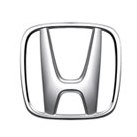
Honda Cars

Chevrolet Cars

Hyundai Cars

Maruti Suzuki Cars

Tata Motors

Ford Cars
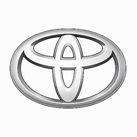
Toyota Cars

Mahindra Cars

Skoda Cars

Audi Cars
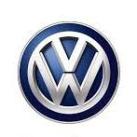
Volkswagen Cars

BMW
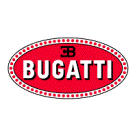
Bugatti Cars

Fiat Cars
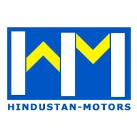
Hindustan Motors Cars
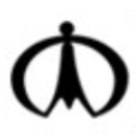
ICML Cars

Jaguar Cars

Force Cars
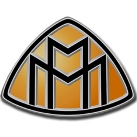
Maybach Cars
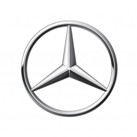
Marcedes Benz Cars

Mitsubishi Cars

Nissan Cars

Porsche Cars

Premier Cars

Reva Cars
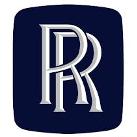
Rolls Royce Cars

Isuzu Cars
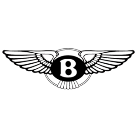
Bentley Cars

Volvo
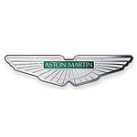
Aston Martin Cars
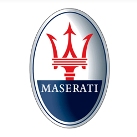
Maserati Cars
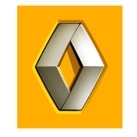
Renault Cars

Ferrari Cars
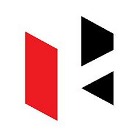
Hero Motocorp

Bajaj

Honda

Yamaha
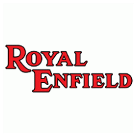
Royal Enfield
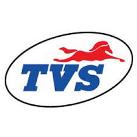
TVS
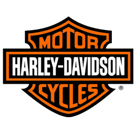
Harley Davidson
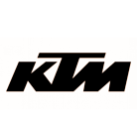
KTM

Suzuki

Triumph
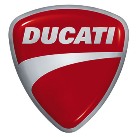
Ducati
Kanda Motors
Monto Motors

Elgin
Global Automobiles
Manitou
Komatsu
Cat Lift Trucks
BPG Motors

Husqvarna
Hyosung

Aprilia
Genxt Power

Hyundai Industries
Kinetic
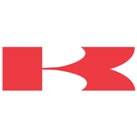
Kawasaki
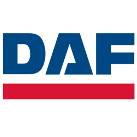
DAF
Eicher
SML ISUZU
HELI
Nissan Forklift
Toyota Industrial Equipment
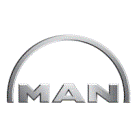
MAN
Mahindra Navistar
Kamaz Vectra
Concrete Canvas
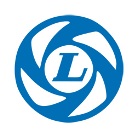
Ashok Leyland
AMW
JCB
Tyre Protector
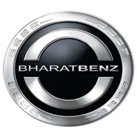
Bharatbenz
Bobcat

Waxpol
Mahindra Motorcycles
Hero Electric
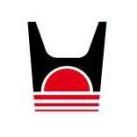
Hero Honda
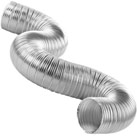
Air Ducts
The air ducts control the passage of hot or cold air into the interior of the car. They are operated by a control on the dash, either manually or automatically.
Add to Enquiry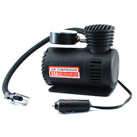
Air Pump
The air pump pumps compressed air into the exhaust manifold and in a few cases to the catalytic converter. The oxygen in the pressurized air helps to burn quite a bit of any unburned hydrocarbons (fuel) and thereby converts the poisonous carbon monoxide into good old carbon dioxide. A belt from the engine drives the air pump. It has little vanes (thin, flat, curved fins) that draw the air into the compression chamber. Here, the air is compressed and sent off to the exhaust manifold where it speeds up the emissions burning process. Stainless steel nozzles are used to shoot the air into the exhaust manifold, because they will not burn. Some engines use a pulse air injection system. Pulses of exhaust gases are used by the system to operate an air pump that delivers air into the exhaust system.
Add to Enquiry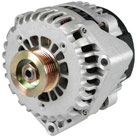
Alternator or Generator
The chief source of power of the electrical system is the alternating-current generator, or alternator. Its shaft is driven by the same belt that spins the fan and it keeps the engine running. It converts mechanical energy into alternating-current electricity, which is then channelled through diodes that alter it to direct current for the electrical system and for recharging the battery.
Add to Enquiry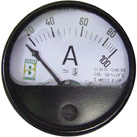
Ammeter
The device is used to determine whether the electrical system is charging, discharging, or staying "level". The gauge should dip when the engine is started, then go up as the alternator re- charges the battery. After a few minutes, it should go to its middle position.
Add to Enquiry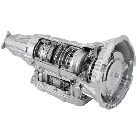
Automatic Transmissions
Automatic transmission has made driving a lot easier to drive and then manual transmission. The best part is that you don't have to use a clutch pedal or gearshift lever. An automatic transmission manages all of this on its own. Automatic transmissions automatically change to higher and lower gears with changes in the car's speed and the load on the engine. These transmissions are also aware of how far down you have pushed the gas pedal, and shift accordingly.
The output shaft turns the governor. The rolling of the governor is directly proportional to the speed of the car. The centrifugal force from the governor sends the oil is sent from the pump to the shift valves. The shift valves then move out sending the transmission fluid to the gear shifting mechanisms in the transmission. When the car slows down, the valves move in and send the transmission fluid in the opposite direction, thus changing the gears. The different gears are selected by routing the pressure to the clutches and brake bands.

Ball Bearings
A ball bearing is an antifriction bearing consisting of a hardened inner and outer race with a series of hardened steel balls separating the two. "Sealed" bearings have plastic dust seals and are greased only at the time of manufacture.
Add to Enquiry
Battery
The battery is the vehicle’s initial source of energy used to start the engine. The battery is then taken over the alternator to supply the car's electrical needs and to restore energy to the battery. A 12-volt storage battery consists of layers of positively and negatively charged lead plates that, together with their insulated separators, make up each of six two-volt cells. The fluid in the cells is electricity-conducting liquid (electrolyte) that is usually two-thirds distilled water and one-third sulphuric acid. Spaces between the immersed plates provide the most exposure to the electrolyte. The interaction of the plates and the electrolyte produces chemical energy that becomes electricity when a circuit is formed between the negative and positive battery terminals
Add to Enquiry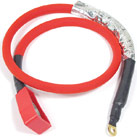
Battery Cables
These are used to connect the battery to the rest of the starting and charging circuits. The battery cables must be of sufficient size to carry such heavy current as a starting motor will draw about 200 amps of current. The cables are prone to corroding as they are close to the battery and therefore it is important that the cables make good electrical contact with the cable clamps. Similarly, clamps must make good electrical contact with the battery posts. Any looseness or corrosion could result in high resistance and consequent voltage drop.
Add to Enquiry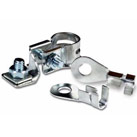
Battery Terminals
The points which connect the wires are called the battery points. The “post” type terminals are being phased out by the "side-mount" type of terminals which use a bolt to screw into the side of the battery and clamp on the battery wire. The vapours from battery acid causes corrosion to form on the lead surfaces, which makes it necessary to clean these periodically. Be sure to wash your hands thoroughly as the corrosion on the terminals is acidic!
Add to Enquiry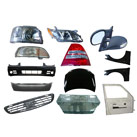
Body
The body shell is a fairly complex assortment of large steel sections. These sections have been stamped into specific shapes that make up the body of your car. These parts are designed to do many jobs at once; protect the occupants from the elements and in collisions, provide solid mounts for all other systems, and to slice through the air with minimal resistance. The body also has one other job which is usually important to the owner... it has to look good! Although the zillions of parts that make up a car are all very important, it is also important that the car's body be able to make riding in a car bearable for you. The body and the suspension system give us a smooth ride, and cushion us from the jarring of the road. Improvements in the body of the car are carried out so that it should go forward with as little up-and-down and side-to-side movement as possible.
Add to Enquiry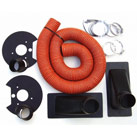
Brake Cooling Ducts
Brakes tend to lose their effectiveness if they get hot. Cool air to be directed onto the brakes, increasing braking potential and reducing brake fade. The air dam has a small opening, behind which runs a small tube to the backing plate. This allows cool air to be directed onto the brakes, increasing braking potential and reducing brake fade.
Add to Enquiry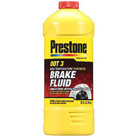
Brake Fluid
Brake fluid is a special liquid used in hydraulic brake systems. It should be impervious to heat, freezing, thickening, and bubbling. There are different types of brake fluids made for different types of systems. These should never mix. Be sure of what you use in the master cylinder reservoir, because, if the brake fluid gets contaminated, you’d have to change all of the piston seals and hoses. It should be noted that brake fluid is highly corrosive to paint, and care should be used not to get it on your car's finish.
Add to Enquiry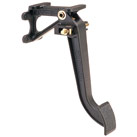
Brake Pedal
The brake pedal is located on the left side of the accelerator pedal and it slows down or stops the vehicle. The brake shoes and friction pads are forced into contact with the brake drums and rotors to slow the rotation of the wheels. The friction between the tires and the road surface then slows the speed of the vehicle. The pedal is solidly mounted to the firewall, and works as a force-multiplying lever. If the power assist fails, the pedal's leverage allows you to generate pounds of pressure at each wheel cylinder. A brake pedal should not sink more than an inch or two, no matter how hard it is pressed with the foot. Warning: Any change in this is a cause for serious concern.
Add to Enquiry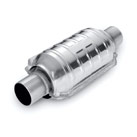
Catalytic Converter
A catalytic converter prevents noxious gases like hydrocarbons, carbon monoxide and nitrogen oxides from polluting the environment by converting them into water vapour and carbon dioxide. The catalytic converter is installed in the exhaust line, between the exhaust manifold and the muffler, and makes use of chemicals that act as a catalyst. The harmful gases enter the catalytic converter, which is a kind of stainless steel container. This is lined with chemicals such as aluminium oxide, platinum and palladium. These chemicals cause the carbon monoxide and hydrocarbons to change into water vapour and carbon dioxide. Some converters have a third lining of chemicals, platinum and rhodium, that reduce nitrogen oxides (three-way, dual bed converter).
Add to Enquiry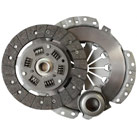
Clutch
The clutch allows connecting and disconnecting the engine and the transmission while starting up and during shifts. Friction plates route the rotation of the engine crankshaft to the gears, and then to the wheels. It takes the rotation up slowly, so that you aren't off to a screeching start. In a manual transmission, the clutch is disengaged when you press the pedal down. The pedal works the thrust pad, and it presses levers in the middle of the clutch cover. Doing all this lifts the pressure plate away from the clutch plate. The flywheel (which is turned by the crankshaft from the transmission shaft) gets disconnected. When you lift the clutch pedal, springs force the pressure plate and clutch plate against the flywheel. The clutch plate friction linings allow it to slide before becoming engaged. The sliding causes a smooth start instead of a jolt.
Add to Enquiry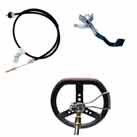
Clutch Pedal, Cables and Levers
One way to activate the throw-out fork of the clutch is by using a system of levers and cables. These levers and cables are connected between the clutch pedal and the throw-out fork. When you press the clutch pedal with your foot, the pressure is transmitted to the fork through the cable and lever arrangement.
Add to Enquiry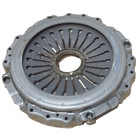
Clutch Plate
The clutch plate is a thin, steel, disc whose centre is connected to the transmission input shaft by a grooved piece of metal, or hub. The disc is covered with material that is similar to the brake linings. This material allows the clutch to slip smoothly and quietly.
Add to Enquiry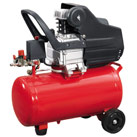
Compressor
The job of the compressor is to move liquid refrigerant around in a pipe. The compressor pumps forces, the liquid from the evaporator into a condenser and expansion valve, and then back to the evaporator. There are three common types of compressors:
• Two-cylinder reciprocating piston type
• Four cylinder RADIAL type
• Six cylinder AXIAL type
The engine drives the compressor with a belt. In action, the compressor takes the low pressure refrigerant from the evaporator and compresses it according to speed and air temperature. The inlet side is known as the low (pressure) side and the outlet side is known as the high (pressure) side. The compressor compresses the refrigerant, and raises its temperature higher than that of the surrounding air. Then, the compressor forces the refrigerant into the condenser.
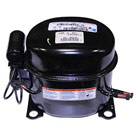
Compressor Relay
A capillary tube from a cycling switch lets the switch know what the temperature is in the evaporator. This switch turns the compressor on and off to keep the evaporator temperature at about 32 to 45 degrees F. The relay switch keeps moisture from freezing on the evaporator core.
Add to Enquiry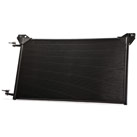
Condenser
The condenser is a long tube that goes back and forth through a multitude of cooling fins. It is mounted in front of the radiator to take advantage of the forced air provided by the fan and the motion of the car. As the highly pressurized refrigerant (vapour) flows into the condenser, it gives off heat and warms the condenser. This causes the condenser to be hotter than the forced air coming through the condenser. The condenser hands its heat off to the forced air and turns the refrigerant back into cool liquid in the expansion valve, where it heads back to the evaporator
Add to Enquiry.jpg)
Coolant (Antifreeze)
Coolant (antifreeze) is a complex chemical liquid helps prevent freezing in cold climates, so that cars can operate in sub zero temperatures, and boils at a higher temperature than water. Besides this, it also lubricates the water pump as it flows through. Some antifreeze compounds are specially formulated for aluminium radiators. Keep the coolant somewhere between 20 and 60 percent of the mixture in your car, depending on the car and climactic conditions. Do not use a strong antifreeze mixture as it can cause leaks in your car's cooling system. Coolant is extremely poisonous and should be handled with care. If it spills on the ground it can kill stray animals that drink it.
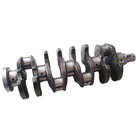
Crankshaft
The crankshaft converts the up and down motion of the pistons into a rotary motion. It provides the turning motion for the wheels. It works much like the pedals of a bicycle, converting up-down motion into rotational motion. The crankshaft is usually either alloy steel or cast iron. The crankshaft is connected to the pistons by the connecting-rods. Some parts of the shaft do not move up and down; they rotate in the stationary main bearings. These parts are known as journals. There are usually three journals in a four cylinder engine.
Add to Enquiry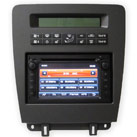
Dash Controls
The dash board, behind the steering wheel displays the control panel of the car. Duplicate fragments of the control panel are found in the interior of your vehicle, such as automatic door locks, extra light switches, etc. Many functions of the car are carried out through the dash board, like turning on the headlights, windshield wipers, horn, turn signals, air conditioning, cassette player, etc. It also contains all of your gauges; gas, temperature, tachometer, etc., which enables the monitoring of the operating conditions of your engine and charging system, fuel level, oil pressure and coolant temperature. It ensures that all the controls are within the drivers reach.
Add to Enquiry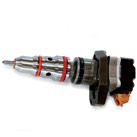
Diesel Fuel Injector
The diesel fuel injector is a pressure valve, but it has specific components that allow it to disperse the diesel fuel in set patterns, depending on the design of the valve. Diesel fuel injectors receive the pressurized impulse from the diesel fuel pump, and allow the fuel to enter the combustion chamber when it is needed. If the diesel fuel injectors get clogged, engine performance suffers.
Add to Enquiry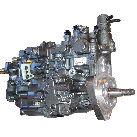
Diesel Fuel Pump
Diesel fuel pumps inject a specific amount of fuel during a specific time, and control the injectors by the pressure waves of the fuel that they pump. The diesel fuel pump has mechanisms in it, which allows more or less fuel to be pumped. If less fuel is pumped into the cylinders, this slows the engine, and vice versa. It thus also regulates the speed. A series of gears link them to the crankshaft or the camshaft, allowing the fuel pump to be driven directly by the crankshaft of the engine. Some may be belt or chain driven.
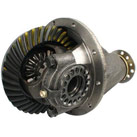
Differential
The differential is the thing that works both drive axles at the same time, but lets them rotate at different speeds so that the car can make turns. When a car makes a turn, the outer wheel has to turn faster than the inner wheel, due to the difference in the length of the paths they take. The differential is located between the two wheels, and is attached to each wheel by a half-shaft rotated through a bevel gear. Four-wheel drive cars have a separate differential for each pair of wheels. A grooved, or splined, axle side gear is positioned on the splined end of each axle. The side gears are driven by "spider" gears, which are little gears mounted on a shaft attached to the differential case. As it is supported by the differential case, the side gear can turn inside the case. The differential case can be turned, revolving around the axle gears. The differential pinion (a pinion is a small gear that either drives a larger gear or is driven by one) shaft turns the ring gear, which is fastened to the differential case. The propeller shaft (drive shaft) connects the transmission output shaft to the differential pinion shaft. The turning differential case is mounted on two large bearing holders. These bearings are called carrier bearings. The propeller shaft rotates the ring gear pinion, and the pinion turns the ring gear. The ring gear then turns the differential case and pinion shaft, but the axle side gears will not turn. By passing the differential pinion shaft through two differential pinion gears that mesh with the side gears, the case will turn and the axle side gears will turn with it. During turns, the side gears turn at rates dictated by the radius of the turns, and the spider gears then turn to allow the outer wheel to turn faster than the inner one.
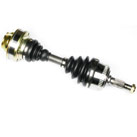
Drive Shaft
The drive shaft, or propeller shaft, connects the transmission output shaft to the differential pinion shaft. Since all roads are not perfectly smooth, and the transmission is fixed, the drive shaft has to be flexible to absorb the shock of bumps in the road. Universal, or "U-joints" allow the drive shaft to flex (and stop it from breaking) when the drive angle changes. There are two types of drive shafts, the Hotchkiss drive and the Torque Tube Drive.
Add to Enquiry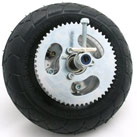
Drive Wheel/Axle
The drive wheel is the end of the axle shaft; it has lugs protruding from it. The lugs are separate pieces that are mounted in the drive wheel. The drive wheel bolts onto the brake drum and the wheel rim of the car itself. It is usually a disc about six or seven inches in diameter. Occasionally the drive wheel and the axle shaft are all one piece.
Add to Enquiry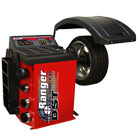
Dynamic Wheel Balance
"Dynamic" balance is the equal distribution of weight on each side of the vertical centreline of the wheel and tire assembly. Unbalance on either or both sides of a plane of rotation, called dynamic unbalance, causes the wheels to bounce, resulting in flat spots on the tire tread and worn ball joints, tie rod ends, steering gears, and shock absorbers. Dynamic unbalance in the front wheels will cause them to wobble.
Add to Enquiry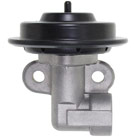
EGR Valve
The Exhaust Gas Recirculation (EGR) valve sends some of the exhaust gas back into the cylinders to reduce combustion temperature. This is required because nitrous oxides (nasty pollutants) form when the combustion temperature gets above 2,500 degrees F. This is as a result of the formation of nitrous oxides when the nitrogen in the air mixes with the oxygen. When it's sunny, the nitrous oxides from the exhaust get together with the hydrocarbons in the air to form smog. This is when the EGR valve comes in handy. By recirculating some of the exhaust gas back through the intake manifold to the cylinders, we can lower the combustion temperature. Lowering the combustion temperature lowers the amount of nitrous oxide produced. Consequently, less of it comes out the tail pipe. There are two types of EGR valves. One operates through the use of a vacuum, and the other operated through the use of pressure. Both types allow the exhaust gas in to lower the combustion temperature when it gets too high.
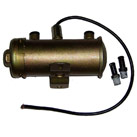
Electric Fuel Pump
Used previously for heavier vehicles, they have only recently become operational in cars. The replacement types usually use a diaphragm arrangement like the mechanical pumps, except that it is actuated by an electrical solenoid. It uses a small turbine wheel driven by a constant speed electric motor. The entire unit is located in the fuel tank and submerged in the fuel itself. When the engine is running the pump pump operates continuously, thus exerting a constant pressure which supplies the maximum fuel demands of the engine. When less fuel is required, the pump does not deliver at full potential, because the turbine is not a positive displacement type like the mechanical pump. Consequently, the turbine will run without pumping fuel and so, needs no means of varying fuel delivery rate like its mechanical counterpart. Since the fuel can flow past the spinning turbine blades, there is no need for pump inlet and outlet valves nor is there any need to vary its speed. A relay for the electric fuel pump is used to complete the circuit to the fuel pump. This cuts off current to the fuel pump in the event of an accident.
Add to Enquiry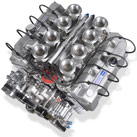
Electronic Fuel Injection
Injectors are opened by solenoids operated by an electronic control unit, as opposed to mechanical injection systems. Since the fuel has no resistance to overcome, other than insignificant friction losses, the pump pressure can be set at very low values, consistent with the limits of obtaining full atomization with the type of injectors used. The control unit, depending on the operating conditions of the engine, determines the amount of fuel to be injected. The conditions depend on manifold pressure, accelerator enrichment, cold-start requirements, idling conditions, outside temperature and barometric pressure. The systems work with constant pressure and with ‘variable timed’ or ‘continuous flow’ injection. The advantages. To begin with, it has fewer moving parts, no need for ultra-precise machining standards and quieter operation. Also, there is less power loss, a low electrical requirement, no need for special pump drives, no critical fuel filtration requirements, no surges or pulsations in the fuel line. More than anything else, it costs lesser than its mechanical counterpart.
Add to Enquiry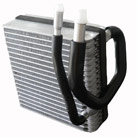
Evaporator
The evaporator is a long tube, or coil, that goes back and forth through a multitude of cooling fins. The refrigerant is a liquid when it enters the evaporator. A fan blows warm air over the evaporator and causes the liquid refrigerant to boil. After it has absorbed the heat from the warm air, the warm air isn't warm anymore. The same blower that blows the warm air (that is now "cool" air) over the evaporator keeps on blowing it into the interior of your car, and you have -- air conditioning! The evaporator also removes the moisture from the air coming through its fins and turns it into water. The water just drains off. The temperature of the evaporator coil can go from 33 degrees F to 0 degrees F. If it goes below 32 degrees F, the moisture that's supposed to drain off the coils will freeze. This makes for a very (surprise!) inefficient system, so a thermostatic switch is used to connect and disconnect it to the compressor as necessary.
Add to Enquiry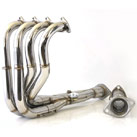
Exhaust Manifold and Header
Usually constructed of cast iron, the exhaust manifold is a pipe that conducts the exhaust gases from the combustion chambers to the exhaust pipe. It has smooth curves in it for improving the flow of exhaust. The exhaust manifold is bolted to the cylinder head, and has entrances for the air that is injected into it. It is usually located under the intake manifold. A header is a different type of manifold; it is made of separate equal-length tubes.
Add to Enquiry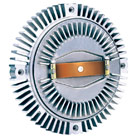
Fan Clutch
The fan clutch is a small fluid coupling with a thermostatic device and controls a variable-speed fan. It ensures that the fan will rotate at just the right speed to keep the engine from overheating, and reduces drive to the fan when it is no longer needed. The fan clutch has a fluid coupling partly filled with silicone oil designed for just that purpose. When the temperature of the air passing through the radiator rises, the heat alerts a bimetal coil spring to "uncoil" or expand. When it expands, it allows just a little more oil to enter the fluid coupling, so the fluid coupling starts to rotate the fan. If the air coming through the radiator is cool, the opposite happens; the coil spring contracts, the oil leaves the fluid coupling and the fan slows. Slowing the fan when it is not needed reduces fuel consumption, makes less noise and saves engine power. Sometimes a flat bimetal strip spring is used instead of a coil spring; it bows out and in when the temperature rises and drops, letting oil in and out of the fluid coupling
Add to Enquiry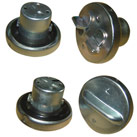
Filler Cap (Brake Fluid Reservoir Cover)
The cap on the brake fluid reservoir has a hole for air, or is vented, to allow the fluid to expand and contract without creating a vacuum or causing pressure. A rubber diaphragm goes up and down with the fluid level's pressure, and keeps out any dust or moisture.
Add to Enquiry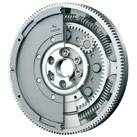
Flywheel
The large wheel connected to the crankshaft provides the momentum to keep the crankshaft turning without the application of power, through the energy generated during the power stroke. This energy is also used to drive the crankshaft, connecting rods and pistons during the three idle strokes of the 4-stroke cycle. This makes for a smooth engine speed. The flywheel forms one surface of the clutch and is the base for the ring gear.
Add to Enquiry.jpg)
Frame (Chassis)
The basic structure of the vehicle is the frame and it provides a good anchor point for the suspension system. There are two types of frames; integral frames, or ‘unibody’, and conventional frames. A conventional frame is basically a ‘one-piece’ frame; or two ‘one-piece’ frames fastened together. These frames are extremely rigid to keep all the parts of the car in perfect alignment, which are attached to it. It is constructed of heavy steel and welded or cold riveted together. Cold riveting keeps the rivets from shrinking after they cool off. The integral, or unibody, frame is just the opposite. With this type of frame, the body parts are used to structurally strengthen the entire car, and all of the sections are welded into one piece. Sometimes the parts of the body and the suspension system are attached and reinforced. Also, some unibody frames have partial front and rear frames for attaching the engine and suspension members.
Add to Enquiry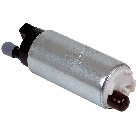
Fuel Pump
The fuel pump has three functions: to deliver enough fuel to supply the requirements of an engine under all operating conditions, to maintain enough pressure in the line between the carburettor and the pump to keep the fuel from boiling, and to prevent vapour lock. Excessive pressure causes the carburettor float needle off its seat its seat resulting in high fuel level in the float chamber, leading to high fuel consumption. Highest pressure occurs at idling speed and the lowest at top speed.
Add to Enquiry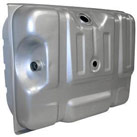
Fuel Tank
The fuel tank stores the excess fuel until it is needed for operation of the vehicle. The fuel tank has an inlet pipe and an outlet pipe. The outlet pipe has a fitting for fuel line connection and may be located in the top or in the side of the tank. The lower end is about one-half inch above the bottom of the tank so that collected sediment will not be flushed out into the carburettor. The bottom of the tank contains a drain plug so that tank may be drained and cleaned.
Add to Enquiry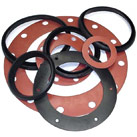
Gaskets
Gaskets and seals the secure machined joints, and prevent fluids and gasses (oil, gasoline, coolant, fuel vapour, exhaust, etc.) from leaking. The cylinder head has to keep the water in the cooling system at the same time as it contains the combustion pressure. Gaskets made of steel, copper and asbestos are used between the cylinder head and engine block. Because the engine expands and contracts with heating and cooling, it is easy for joints to leak, so the gaskets have to be soft and "springy" enough to adapt to expansion and contraction. They also have to make up for any irregularities in the connecting parts
Add to Enquiry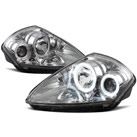
Headlights
Headlights are mounted on the front of the car to light the road ahead during night or foggy days. They have reflectors and special lenses and are usually the sealed beam construction type, with the filament, reflector and lens fused together into an airtight unit. The most popular type of headlight is the halogen type, because it provides bright illumination. The halogen bulb is filled with pressurized gas (halogen) and can produce flying fragments if shattered. Wear protective glasses for changing a halogen lamp and always throw out the old one in the protective carton that comes with the new one.
Add to Enquiry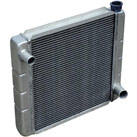
Heat Exchanger
The "heat exchanger" is a device that uses exhaust heat to aid in fuel evaporation. It usually is built into the intake manifold as an area where the hot exhaust gasses and fuel-air mixture come close to each other.
Add to Enquiry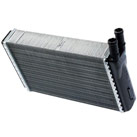
Heater Core
The heater core is a smaller version of the radiator that is used to keep your toes warm when it's cold outside. It is mounted under the dashboard. Some of the hot coolant is routed through this little radiator, by more hoses. A small electric fan is also mounted there especially for the purpose of directing the heat inside the car. The principle is exactly the same as the one used in the radiator for your engine, except that the heat is released inside the car instead of outside.
Add to Enquiry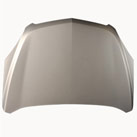
Hood
The car’s hood consists of an inner and an outer panel. The inner panel provides strength, while the outer panel is just a metal cover. The underside of the hood is often covered with a sound-absorbing material. Some high performance cars have ‘hood scoops’ which channel outside air directly to the air filter, which gives improved performance and efficiency. The hood release is a small lever, which is usually mounted under the dash. It is connected to the hood latch by a cable. The hood latch has a safety feature, which requires a second latch to be released before the hood will open. This is to prevent accidental opening while driving.
Add to Enquiry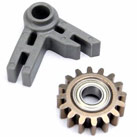
Idler Gears
These are small gears which are not directly linked to anything. Idle gears are used to reduce or increase rotation speeds, and reverse directions of rotation. The centre gear would be considered an idle gear, if three gears are connected in a string.
Add to Enquiry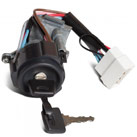
Ignition Circuit
An ignition circuit is made up of two sub-circuits: the primary, which carries low voltage; and the secondary, which carries high voltage. The primary circuit is controlled by the ignition key. It releases 12 volts of electricity from the battery or alternator through the coil to a set of breaker points in the lower part of the distributor, or to the relay in electronic ignition applications. When the points or relay are closed, current flows through the chassis back to the battery, completing the circuit. When the points or relay are open, the flow stops, causing a high-voltage surge to pass from the coil through a rotor in the top of the distributor to the spark plugs. Once the car has started, the voltage regulator protects the battery from being overcharged by the alternator. Part of the low -voltage current is absorbed by the condenser when the points are open.
Add to Enquiry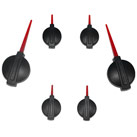
Indicator Needle
This is the pointer on your gauge that shows you the gauge's current reading. Its examples are those found in your speedometer, temperature gauge, and tachometer and oil pressure gauge.
Add to Enquiry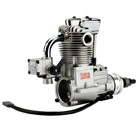
Intake Stroke
The first stroke is called the intake stroke. The piston moves down the cylinder, creating a partial vacuum in the cylinder. A mixture of air and fuel is then forced through the inlet valve into the cylinder by atmospheric pressure, now greater than the pressure in the cylinder. The exhaust valve stays closed during the stroke
Add to Enquiry
Knock Sensor
The knock sensor senses when fuel is burning unevenly and causing "knocking" or irregular vibrations in the engine. It consists of an electric coil that is wound around two ceramic rods with a magnet in the centre. The vibration of the engine causes the rods to vibrate. This disturbs the coil’s magnetic field and alters the current passing through the coil. This disturbance returns to the computer as a signal pattern that the computer analyzes. The computer then determines whether the vibrations are characteristic of engine knocking.
Add to Enquiry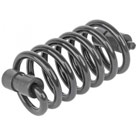
Lever Return Spring
A return spring, or restoring spring, is a coil spring that moves something, such as a valve or diaphragm back to its normal position and holds it there.
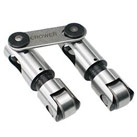
Lifter Body
The valve lifter body houses the valve lifter mechanism. The valve lifter is the unit that makes contact with the valve stem and the camshaft. It rides on the camshaft. When the cam lobes push it upwards, it opens the valve.
Add to Enquiry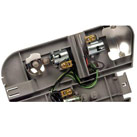
Lighting Circuit
The automobile lighting circuit includes the wiring harness, all the lights, and the various switches that control their use. The complete circuit of the modern passenger car can be broken down into individual circuits, each having one or more lights and switches. In each separate circuit, the lights are connected in parallel, and the controlling switch is in series between the group of lights and the fuse box. The parking lights are connected in parallel and controlled by a single switch. In some installations, one switch controls the connection to the fuse box, while a selector switch determines which of two circuits is energized. The headlights, with their upper and lower beams, are an example of this type of switch. Again, in some cases, such as the courtesy lights, several switches may be connected in parallel so that any switch may be used to turn on the lights.
Add to Enquiry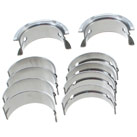
Main Bearings
The main bearing secures the crankshaft in its place. The largest number of main bearings a crankshaft can have is one more than the number of cylinders, but it can have one less bearing than the number of cylinders. Not only do the bearings support the crankshaft, but one bearing must control the forward-backward movement of the crankshaft. This bearing rubs against a ground surface of the main journal, and is called the "thrust bearing."
Add to Enquiry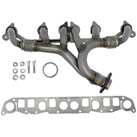
Manifold to Exhaust Pipe Gaskets
There are several types of gaskets that connect the exhaust pipe to the manifold. One is a flat surface gasket. Another type uses a ball and socket with springs to maintain pressure. This type allows some flexibility without breakage of the seal or the manifold. A third type is the full ball connector type, which also allows a little flexibility.
Add to Enquiry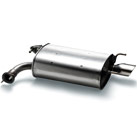
Muffler
The muffler serves to muffle the noise coming out of the engine. Exhaust gases leave the engine under extremely high pressure. If these gases escaped directly from the engine the noise would be tremendous. Therefore, the exhaust manifold sends the gases to a muffler where they go through metal plates, or tubes, with a series of holes. The pressure of the gases is reduced when they pass through the muffler, so they go out of the tail pipe quietly. Made of metal, the muffler is located underneath the body of the car. It is connected between the tail pipe and the catalytic converter. There are two types of muffler designs. While one type uses several baffled chambers to reduce noise, the other sends the gases straight through perforated pipe wrapped in metal or fibreglass. This type of muffler is designed for the purpose of reducing backpressure and, consequently, makes slightly more noise.
Add to Enquiry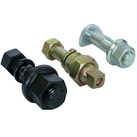
Nuts and Bolts
Nuts are hexagon shaped metal objects with a threaded hole through them so that they can be attached to bolts. Bolts are cylindrical objects with groves on the outside, which enable them to be screwed into nuts. A bolt without an end is classified as a ‘lug’ or ‘stud’. There are many grades of nuts and bolts. Grades depend on the quality of the materials and the tolerances observed during the manufacture of the nuts and bolts. Nuts and bolts are often separated by washers. Washers have many shapes and sizes. They give the nut and the bolt a firm hardened surface for bedding against. The parts that you put together with nuts and bolts are usually not as strong as the nuts and bolts themselves. The washers allow the nuts and bolts to be fully tightened down, providing a wider area to spread out the force of the tightening and they keep the nuts and bolts from digging into the material when they are tightened.
Add to Enquiry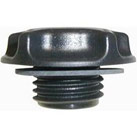
Oil Filler Cap
The oil filler cap is a plastic or metal cap that covers an opening into the valve cover. It allows you to add oil when the dipstick indicates that you need it. Some cars have the crankcase vented through the filler cap. Oil which is added through the filler passes down through openings in the head into the oil sump at the bottom of the engine.
Add to Enquiry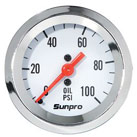
Oil Gauge
The Oil Gauge lets you know the pressure in the oil pump; and is a direct indicator of the condition of your engine. If the oil gauge gives very low readings, it means that your oil pressure has dropped. The engine would soon grind to a halt if the oil is not forced into the nooks and crannies that need to be oiled.
Add to Enquiry.jpg)
Overhead Valve (OHV)
In an overhead valve (OHV) engine, the valves are mounted in the cylinder head, above the combustion chamber. Usually this type of engine has the camshaft mounted in the cylinder block, and the valves are opened and closed by push rods.
Add to Enquiry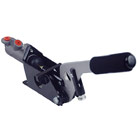
Parking Brake
The parking brake holds one or more brakes continuously in the applied position. The parking brake employs the regular drum brakes on the rear wheel. Instead of hydraulic pressure, however, a simple mechanical linkage is used to engage the brake shoes. When the parking-brake pedal is depressed (or, in some cars, a hand lever is raised), a steel cable pulls taut a tension lever; other cables draw the brake shoes firmly against the drums. The release knob slackens the cables and disengages the brake shoes. The parking brake is self adjusting. An automatic adjuster in the piston moves on the thrust screw to compensate for lining wear.
Add to Enquiry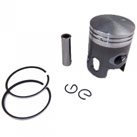
Piston, Rings, and Wrist Pin
The piston converts the potential energy of the fuel into the kinetic energy that turns the crankshaft. The piston is a cylindrical shaped hollow part that moves up and down inside the engine's cylinder. It has grooves around its perimeter near the top where rings are placed. The piston fits snugly in the cylinder. The piston rings are used to ensure a snug "air tight" fit. The wrist pin connects the piston to the connecting rod. Pistons are made of aluminium, because it is light and a good heat conductor. The piston head or "crown" is the top surface against which the explosive force is exerted. It may be flat, concave, convex or any one of a great variety of shapes to promote turbulence or help control combustion. In some, a narrow groove is cut into the piston above the top ring to serve as a "heat dam" to reduce the amount of heat reaching the top ring.
Add to Enquiry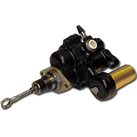
Power Brakes
Power brakes are of four general types: vacuum suspended; air suspended; hydraulic booster, and electro-hydraulic booster. Most power brakes use vacuum suspended units, which contain a large vacuum-powered booster device to provide the added thrust to the typical power-brake. Pressure on the brake pedal pushes forward a rod connected to the pistons of the two master cylinders. The pistons begin forcing fluid into the front and rear brake lines. At the same time, the brake-pedal pushrod positions the vacuum-control valve so that it closes the vacuum port and seals off the forward half of the booster unit. The engine vacuum line then draws off the air, creating a low-pressure vacuum chamber. Atmospheric pressure in the control chamber then pushes against the diaphragm, dividing the two chambers. The pressure on the diaphragm, which is locked to the pushrod, forces it forward, supplying even more pressure on the pistons. The safe driver is always ready to apply the total force needed to stop their vehicle, even if the engine quits (removing the power assist).
Add to Enquiry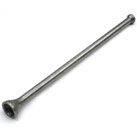
Push Rod
A push rod is a connecting link in an operating mechanism. Two examples are the rod between the valve lifter and rocker arm on an overhead valve engine, and push rods at the piston ends which apply pressure to the brake shoes.
Add to Enquiry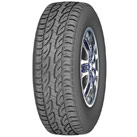
Radial Tyres
In radials tyres the ply or ply cords are aligned at 90 degrees to the circumference. While radials improve performance the fact is that they are not very good for bad roads and overloading. The suspension of a vehicle has, also, to be modified to accept radials. Radials offer much better grip of the road especially on surfaces which offer poor wheel traction like wet of slippery roads.
Add to Enquiry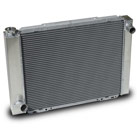
Radiator
The radiator is used to dissipate the heat that the coolant has absorbed from the engine. It is constructed to hold a large amount of water in tubes or passages which provide a large area in contact with the atmosphere. It generally consists of a radiator core, with its water-carrying tubes and large cooling area, which are connected to a receiving tank (end cap) at the top and to a dispensing tank at the bottom. Side flow radiators have their "end caps" on the sides, which allow a lower hood line. While in operation, water is pumped from the engine to the top (receiving) tank, where it spreads over the tops of the tubes. As the water passes down through the tubes, it loses its heat to the airstream, which passes around the outside of the tubes. To help spread the heated water over the top of all the tubes, a baffle plate is often placed in the upper tank, directly under the inlet hose from the engine. Sooner or later, almost everyone has to deal with an overheating car. Since water is readily available, it is not beyond the ability of most people to add some to their radiator if it's low.
Add to Enquiry.jpg)
Radiator Cap (Pressure Cap)
The radiator cap is more than a cap for your radiator; it keeps your engine cool by sealing and pressurizing the coolant inside it. It is designed to hold the coolant in the radiator under a predetermined amount of pressure. If it was not kept under pressure, it would begin to boil, and soon all the coolant would have boiled away. However, the radiator (or pressure) cap prevents this from happening by exerting enough pressure to keep the coolant from boiling. If your cooling system is under too much pressure, it can "blow its top"! To prevent this, the radiator cap has a pressure relief valve. The valve has a preset rating that allows it to take just up to a certain amount of pressure. When you turn the cap on the filler neck of the radiator, you seal the upper and lower sealing surfaces of the filler neck. The pressure relief valve spring is compressed against the lower seal when you lock the cap. The radiator filler neck has an overflow tube right between the two sealing surfaces. If the pressure in the cooling system exceeds the preset rating of your cap, its pressure relief valve allows the lower seal to be lifted from its seat. Then the excess pressure (coolant, air) can squish through the overflow tube to the ground or the coolant reservoir. Once enough pressure has been released (the caps preset rating), the pressure relief valve is again closed by the spring. The pressure cap can be tested with a cooling system pressure tester, using an adapter, to make certain that it is living up to its pressure rating. It should be replaced if it fails the test. It should be noted that most radiator pressure caps are not meant to be removed, and that the coolant should always be added through the expansion (overflow) tank. If you happen to remove the radiator cap from a hot engine, the pressure can cause steam to shoot out and seriously burn you.
Add to Enquiry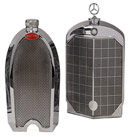
Radiator Grille
The radiator grille is the part of the body shell on the front of your car that covers the area where the air enters. The radiator grille can also be part of the bumper on some cars. The radiator is connected to the shroud for the radiator, which directs the air that comes in through the radiator grille to the radiator only. This prevents the air from escaping around the radiator and failing to cool the engine. On newer cars, the radiator grille has been lowered to take advantage of lower hood lines, brought about by an effort to increase fuel efficiency. Older cars had massive grilles, whereas the cars now produced have smaller more aerodynamic grilles.
Add to Enquiry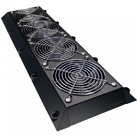
Radiator Shroud
The radiator shroud prevents the recirculation of air around the fan. It is usually a plastic hood that encloses the fan to guide the air through the core, and stop it from coming back around and through the fan again. It also protects you from the fan blades!
Add to Enquiry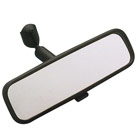
Rear View Mirror
The rear view mirror is a wide rectangular mirror that you (the driver) use to view anything behind the car. You don't have to take your eyes off the road to turn your head around. On most cars, the rear view mirror has a "day/night" selection switch that tilts the mirror inside its glass housing without tilting the exterior glass housing itself. The switch tilts the mirror upward, about five degrees, to divert the majority of the light striking the mirror up on to the headliner of the car. The light that you see when the mirror is on the "night" setting is actually bouncing off the glass housing (a good reason to keep it clean). The percentage of light reflected into your eyes in the night position, is very small compared to the amount that would normally be reflected into your eyes in its normal position.
Add to Enquiry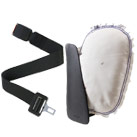
Seat Belts and Air Bags
Air bags protected occupants in ways that seat belts alone cannot. The air bag spreads out the violent impact of a crash and kept occupants from smashing against the steering wheel, dashboard or windshield. Having an air bag and wearing an effective seat belt is the best protection. By this, you are protected from frontal crashes by the air bag -- you are also protected by the seat belt in all other types of crashes. With an "effective" safety belt, your body will stop, in a crash, before you hit or go through the windshield and parts of your car. Seat belts are especially important in small cars, because your chances of being killed or badly hurt in a collision with a big car is eight times greater. Wearing your belt will greatly improve your chances of survival. Air bags can reduce the risk of death in a head-on collision by 26%% and in all serious accidents by 13%.
Without a Belt, Air Bags are of Slight Benefit Air bags are only useful in frontal crashes, so it is not a good idea to skip your seat belt because you have an air bag. Air bags provide very effective protection in frontal crashes, inflating instantly to protect the driver or passenger that has an air bag. They spread the impact of the crash over the individual's head and chest and protect fragile body parts from the car's hard surfaces. Many basic improvements have been introduced into cars in recent years. These include anti-burst door latches, safety glass, energy-absorbing steering wheels and columns, head restraints and various seat belt systems. The benefits of the three-point seat belts have been firmly established: over 50%% of fatal and serious injuries to car occupants would be avoided if all occupants wore their seat belts.
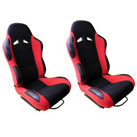
Seats
There are basically two types of seats; bench seats or bucket seats. A bucket seat is a low, separate seat for one person. Although we think of them as relatively new, it is interesting to note that in 1905 Henry Ford's first model had bucket seats. Bench seats are a continuous cushion and backrest across the width of the car (although some vans might have them running along the length of the van). Bucket seats are single units with a separation between the left and right seats. Usually vinyl leather and fabric are used for upholstery.
"Flat springs" are used for comfort, which are pieces of wire bent into a zigzag pattern. Both ends of the wire are attached to the seat frame, with additional lengths added every six inches. Foam padding is used to cover the flat springs. The front seats ride on rails that are bolted to the floor. This arrangement allows the seats to move backwards and forwards to suit the driver or passenger. The seat adjustment lever is attached to a latch that fits into teeth along the rail. Moving the lever releases the seat, and allows the seat to move. At any point of the seat's movement, releasing the lever engages the latch with one of the teeth. Usually there is also a pull-spring; this draws the seat forward when the latch is released. The rear seat usually doesn't move, because it is secured to the floor of the car. It's backrest is attached to the partition between the passenger compartment and trunk.
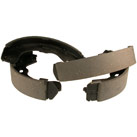
Secondary Brake Shoe
The Secondary brake shoe is the shoe in a set that is energized by the primary shoe. A brake shoe is a carrier to which the brake lining is attached, used to force the lining in contact with the brake drum or rotor. When brakes are applied, the brake shoes or friction pads are forced into contact with the brake drums or rotors to slow the rotation of the wheels. The vehicle slows down as a result of the friction between the tires and the road surface.
Add to Enquiry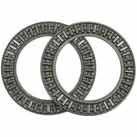
Thrust Bearings
Thrust bearings are similar to ball bearings except that the plates that the balls ride between are designed as flat washers. The balls riding between these washers reduce side-to-side load. These are used inside of the transmission, rear end and many other areas of the car.
Add to Enquiry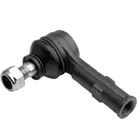
Tie Rod Ends
Tie rod ends are utilized in the steering linkage, steering knuckle pivot supports, and various other hinge mechanisms. Ball joints that join the key parts of the steering linkage pass on the steering wheel's motion no matter what the angle of the linkage or the vibration from the road.
Add to Enquiry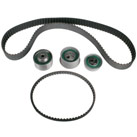
Timing Chain/ Belt
The automobile engine uses a metal timing chain, or a flexible toothed timing belt to rotate the camshaft. The timing chain/belt is driven by the crankshaft. The timing chain or timing belt is used to "time" the opening and closing of the valves. The camshaft rotates once for every two rotations of the crankshaft.
Add to Enquiry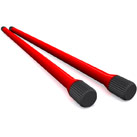
Torsion Bars
Torsion bar suspension uses the flexibility of a steel bar or tube, twisting lengthwise to provide spring action. Two rods of spring steel are used in this type of suspension. One end of the bar is fixed solidly to a part of the frame behind the wheel; the other is attached to the lower control arm. As the arm rises and falls with wheel movement, the bar twists and absorbs more of the road shocks before they can reach the body of the car. Just like a spring that rebounds after it has been compressed, the bar untwists when the pressure is released. Adjusting the torsion bars controls the height of the front end of the vehicle. The adjusting bolts are located at the torsion bar anchors in the front crossmember. The inner ends of the lower control arms are bolted to the crossmember and pivot through a bushing.
Add to Enquiry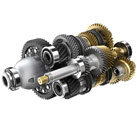
Transmission Fluid Dip Stick
The transmission fluid dip stick is a long metal rod that goes into the transmission. It serves check how much transmission fluid is in the transmission. The dip stick is held in a tube; the end of the tube extends into the transmission. It has measurement markings on it. If you pull it out, you can see whether you have enough transmission fluid, or whether you need more by the level of fluid on the markings. Most manual transmissions do not have dipsticks, instead they use a filler hole which is at the same level as the correct oil level. When the oil is topped up or refilled, the mechanic simply adds oil until the filler hole's level is reached.
Add to Enquiry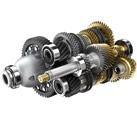
Transmission Gears
Most cars have from three to five forward gears, and one reverse gear. The transmission changes the ratio of the engine speed and the wheels by connecting gears in various combinations. First gear connects the engine power to the drive wheels via a pair of reduction gear sets, which gives increased power and reduced wheelspeed when the car is beginning to move. Gears work exactly like levers. A small gear driving a larger one gives an increase in torque, and a decrease in speed, and vise-versa. Transmission gears are heat-treated, high quality steel. They have smooth, hard teeth, cut on precision machinery while red hot. There are many types of gear teeth, but most transmissions use spur and helical gears. Most of the gears are the helical type, because they last longer and are more quiet than spur gears. There has to be enough room (a few thousandths of an inch) between the gear teeth for lubrication, expansion, and any irregularities in size.
Add to Enquiry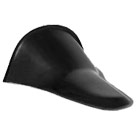
Transmission tunnel
The transmission tunnel is a cone-shaped formation in the front of the floor pan. Its shape duplicates the transmission, but it is a little bit bigger and provides about two inches of clearance around the transmission. The transmission tunnel does not exist in front wheel drive cars, because the transmission is on the side of the engine completely under the hood. Only rear-wheel drive cars have transmission tunnels. A manual transmission tunnel has a hole in it to allow the shift linkage to be worked from inside the car. The shifter linkage goes through the transmission tunnel. A rubber boot on the shifter linkage stops dirt, dust and exhaust fumes from entering the passenger compartment. The rubber boot is mounted onto the transmission tunnel and fastened securely around the gearshift linkage. Vehicles with automatic transmission do not need a transmission tunnel because the shift linkage does not usually go through the transmission tunnel. The shift linkage in automatic transmission usually goes in front of the firewall from the base of the steering column.
Add to Enquiry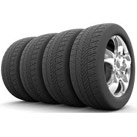
Tyres
A tyre is a tubular corded carcass covered with rubber or synthetic rubber, which is mounted on a wheel and inflated to provide traction for moving a vehicle and for assisting the brakes in stopping it.
Add to Enquiry.jpg)
Universal Joint (U-joint)
The Universal joint (U-joint) connects the drive shaft to the transmission output shaft and the differential pinion gear shaft. This joint must be flexible enough to allow changes in the driving angle (road incline) and the drive shaft. This way, the torque is constantly transmitted when the rear axle is moving up and down. Smaller U-joints are used to route the turning motion of the steering wheel through the steering column to the steering box. There are two types of U-joints, the cross and roller type and the ball and trunnion type. The cross and roller type is used the most; it allows the drive shaft to bend. The ball and trunnion type less frequently used; it allows the drive shaft to bend and also permits backward and forward motion of the drive shaft.
Add to Enquiry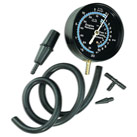
Vacuum Hoses and Motors
Vacuum lines are a series of hoses, or tubing, to the intake manifold. These hoses supply vacuum to various components of the engine, such as the emissions control system. Most air conditioning systems have vacuum motors to open and close the doors on the air conditioning ducts. A vacuum motor is just a small diaphragm with connecting rods to activate the valves of the system. They have the advantages of simplicity and quietness.
Add to Enquiry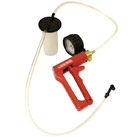
Vacuum Pump
Most of the fuel pumps have a vacuum booster section that operates the windshield wipers at an almost constant speed. The fuel section then functions in the same way as ordinary fuel pumps. One difference is that the rotation of the camshaft eccentric in the vacuum pump also operates the vacuum booster section by actuating the pump arm, which pushes a link and the bellows diaphragm assembly upward, expelling air in the upper chamber through its exhaust valve out into the intake manifold. On the return stroke of the pump arm, the diaphragm spring moves the bellows diaphragm down, producing a suction in the vacuum chamber. The suction opens the intake valve of the vacuum section and draws air through the inlet pipe from the windshield wipers. When the wipers are not operating, the intake manifold suction (vacuum) holds the diaphragm up against the diaphragm spring pressure so that the diaphragm does not function with every stroke of the pump arm. When the vacuum is greater than the suction produced by the pump, the airflows from the windshield wiper through the inlet valve and vacuum chamber of the pump and out the exhaust valve outlet to the manifold, leaving the vacuum section inoperative. With high suction in the intake manifold, the operation of the wiper will be the same as if the pump were not installed. When the suction is low, as when the engine is accelerated or operating at high speed, the suction of the pump is greater than that in the manifold and the vacuum section operates the wipers at a constant speed.
Add to Enquiry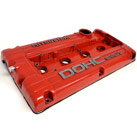
Valve Cover
The valve cover covers the valve train. The valve train consists of rocker arms, valve springs, push rods, lifters and cam (in an overhead cam engine). The valve cover can be removed to adjust the valves. Oil is pumped up through the pushrods and dispersed underneath the valve cover, which keeps the rocker arms lubricated. Holes are located in various places in the engine head so that the oil recirculates back down to the oil pan. For this reason, the valve cover must be oil-tight; it is often the source of oil leaks. One way to determine if your valve cover is bent is to remove the gasket and put the valve cover back on to the cylinder head. When the valve cover and cylinder head come into contact, the cover should sit flat. If it rocks, it is bent. A symptom of a bent or leaking valve cover is a pinching of the valve cover gasket. This means that the gasket is sealing one area and not sealing another area. This condition produces a leak; oil could be leaking down the side of the engine. Some valve covers are hard to access, because they are covered with other engine parts. Chronic valve cover leakage can sometimes be fixed by using two gaskets glued together instead of using just one.
Add to Enquiry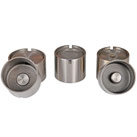
Valve Lifter
The valve lifter is the unit that makes contact with the valve stem and the camshaft and rides on the camshaft. It opens the valve when the cam lobes push it upwards. The engine oil comes into the lifter body under pressure. It passes through a little opening at the bottom of an inner piston to a cavity underneath the piston. The oil forces the piston upward until it contacts the push rod. When the cam raises the valve lifter, the pressure is placed on the inner piston, which tries to push the oil back through the little opening. It can't do this, because a small check valve seals the opening. When the cam goes upward, the lifter solidifies and lifts the valve. Then, when the cam goes down, the lifter is pushed down by the push rod. It adjusts automatically to remove clearances.
Add to Enquiry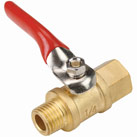
Valve Ports
Valve ports are openings in the cylinder head. Intake ports let the fuel mixture into the cylinder head, and exhaust ports let the exhaust out.
Add to Enquiry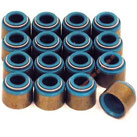
Valve Seals
The valve seal is a unit that goes over the end of the valve stem. It keeps excess oil from getting between the valve guide and the valve stem.
Add to Enquiry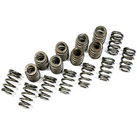
Valve Springs
The valve springs keep the valves closed tightly against their seats until the cam opens the valve. After the cam turns (releasing pressure), the valve springs close the valves.
Add to Enquiry
Valves
The valve opens and close the valve ports. If the ports were always open, the fuel exploded in the combustion chamber would leave through the ports. The explosion has to be kept in the combustion chamber to push the piston down. The valves are set up to open and close at exactly the right moment. One lets the fuel mixture in and closes. After the fuel explodes and pushes the piston down, the other valve lets the exhaust out.
Add to Enquiry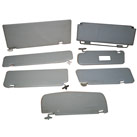
Visor
The visor is a flat sunshade and is usually movable. It is attached to the interior of the car at the top of the windshield. Visors protect the eyes of the driver and passengers from the sun's glare.
Add to Enquiry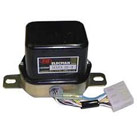
Voltage Regulator
The voltage regulator controls voltage and current output of the alternator by automatically cutting resistance in or out of the field circuit to keep it in a safe value. Varying the resistance alters the amount of current passing through the field. When the battery becomes fully charged, the resistance is cut into the field circuit and the charging rate is decreased. In electromagnetic regulators, the voltage regulator unit limits voltage output by controlling the amount of current applied to the rotating field. The field relay on these regulators connects the alternator field windings and voltage regulator windings directly to the battery. The conventional cutout relay unit has been eliminated by the diodes in the alternator. The current regulator has also been eliminated by the current-limiting characteristic of the alternator design. Basically, in a transistorized or an electronic regulator, the transistor is switched on and off to control the alternator field current. The frequency of switching depends on the alternator speed and accessory load, with the possibility that the on-off cycle may be repeated as often as 7000 times per second. The transistorized units have a voltage limiter adjustment. The electronic units are factory calibrated and sealed. They are also nonadjustable.
Add to Enquiry-Jackets.jpg)
Water (Coolant) Jackets
Water Jackets are used in cars to keep them cool. It is a collection of passages within the block and head, which let the coolant circulate around the "hot spots" (valve seats and guides, cylinder walls, combustion chamber, etc.) in order to cool them off. The engine block is actually manufactured in one piece with the water jackets cast into the block and cylinder head. At normal operating temperature, the water pump forces the coolant through the head gasket openings and on into the water jackets in the cylinder head. It flows around in there, cooling everything off by absorbing the heat. After doing its thing, the coolant flows through the upper hose to the radiator where it releases the heat. Then, the water pump sends it back down into the engine's water jackets to continue the cooling process. On the sides of the engine are "freeze" or "expansion" plugs, which are sheet metal plugs pressed into a series of holes in the block, and are designed to hold the pressure of the cooling system. However, they pop out if the coolant in the block ever freezes.
Add to Enquiry-Cylinder.jpg)
Wheel (Slave) Cylinder
The wheel cylinder, also called the brake cylinder or slave cylinder, is a cylinder in which movable piston(s) convert hydraulic fluid pressure into mechanical force. The piston(s) within the cylinder move the brake shoes or pads against the braking surface of the drum or rotor. There is one cylinder (or more in some systems) for each wheel. The cylinder is usually made up of a single-bore cylinder casting, an internal compression spring, two pistons, two rubber cups or seals, two rubber boots to prevent entry of dirt and water, and a bleeder screw (valve). In drum type brakes, the wheel cylinder is fitted with push rods that extend from the outer side of each piston through a rubber boot, where they bear against the toe end of each brake shoe. In disc brakes, the wheel cylinder is part of the caliper. As the brake pedal is depressed, it moves pistons within the master cylinder, forcing hydraulic brake fluid through the brake lines and into cylinders at each wheel. The fluid under pressure causes the wheel cylinders' pistons to move, which forces the shoes or pads against the brake drums or rotors. Two-way pressure is applied when the wheel cylinder is activated. Brake fluid enters the center of the cylinder, forcing the pistons apart. Pushrods at the piston ends then apply equal pressure to the brake shoes. When pressure is released, a return spring pulls the pistons together.
Add to Enquiry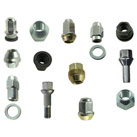
Wheel Lugs
The large bolts that go through the wheel rim and secure it to the wheel hub are known as the wheel lugs. They are pressed into the hub from the inboard side so they cannot pull out when tightened. The lug nuts thread onto the wheel lugs, clamping the wheel rim between the hub and lug nuts. If the wheel lug nuts are not properly tightened your wheel will come off. Over- tightening, conversely, can prevent you from being able to change a flat tire.
Add to Enquiry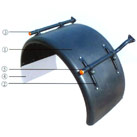
Wheel Well
The wheel well is either plastic or metal. Metal wheel wells are usually part of the body shell. Metal wheel wells strengthen the structure of the car because of their shape, and because they are strongly welded to the body shell. Most rear wheel wells are made of metal. Wheel wells are coated with a rock-proof, rubberized coating underneath to prevent the rocks kicked up by the wheels from damaging the metal and making a lot of noise when they hit. The front wheels are often made of plastic. This is because it is harder to mount the engine with the front wheel wells in place. Plastic wheel wells can be removed, and are easier to mount the engine during the manufacturing of the car.
Add to Enquiry
Wheels
Wheels come in many different designs and usually fall into two categories: stamped sheet metal and machine castings. Some wheels are a combination of the two. Generally cast alloy wheels are higher priced, but have greater strength than stamped sheet metal wheels. The most common are the stamped sheet metal wheels because they are less expensive to produce and are adequate for most uses. Some cars have wire wheels, which consist of three basic components; inner rings, outer rings, and a series of spokes, which connect the two. Cast aluminum wheels are very popular, magnesium wheels are also popular. Both are popular because they are lightweight and strong.
Add to Enquiry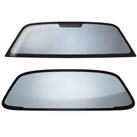
Windshield
Most windshields are stationary. They are fixed in place with a weather-strip made of rubber, which has a groove on the inside and a groove on the outside. The inside groove holds the glass; the outside groove holds the metal rim of the windshield opening in place. The glass "floats" in a plastic sealant that is spread out between the edge of the glass and the frame of the windshield. Windshields are made of laminated safety plate glass, which is a sandwich of glass and clear plastic. The plastic acts as a soft, protective barrier, keeping the glass in place, if it is struck during a collision. The glass sticks to the plastic to eliminate glass from flying around the interior and injuring someone.
Add to Enquiry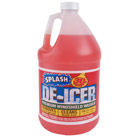
Windshield Washers
All cars use an electric pump-operated windshield washer with a positive displacement washer pump. On some, the motor is placed in the washer reservoir, while on others, it is driven by a wiper motor. When the pump is attached to the wiper motor, the four lobe cam starts a spring-loaded follower, but the pump does not operate all the time that the wiper motor is running. This is because the pumping mechanism is locked out and pumping action occurs.
Add to Enquiry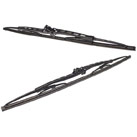
Windshield Wipers
Most cars have an intermittent wiper system, which permits the driver to select a delayed wipe that operates only every few seconds. A representative wiper/washer unit is the wiper assembly, which incorporates a depressed park system that places the wiper blades below the hood line in the parked position. The relay control uses a relay coil, relay armature, and switch assembly. It controls starting and stopping of the wiper through a latching mechanism. An electric washer pump is mounted on the gear box section of the wiper. The wiper unit gear assembly drives it.
Add to Enquiry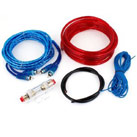
Wires and Cables
Wires and cables conduct electricity. Usually, they are made of annealed copper and are used to carry electricity to the various electrical devices and equipment on passenger cars and trucks. Wire and cable sizes are expressed by a gauge number, which indicates the cross-sectional area of the conductor. The larger the diameter of the wire or cable, the smaller the gauge size number. Cables are made of several strands of wire. The cross-sectional area is equal to the circular mil area of a single strand times the number of strands.
Add to Enquiry